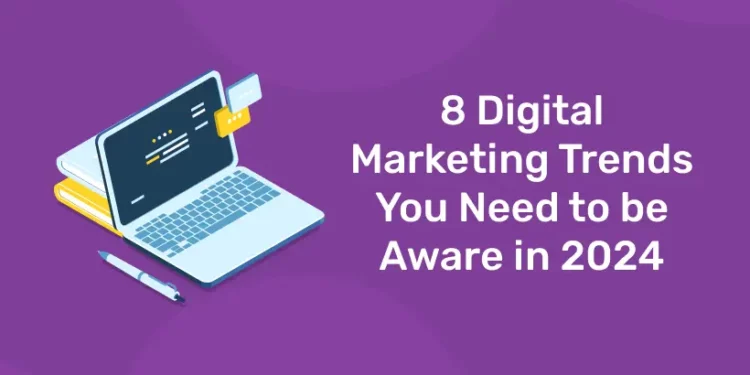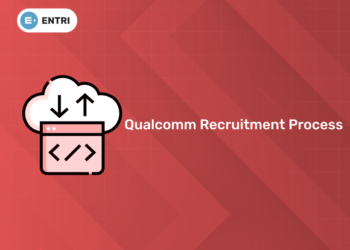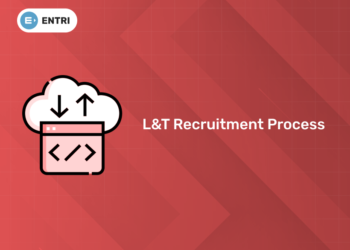Table of Contents
In the ever-evolving realm of digital marketing, staying ahead means embracing change and harnessing the power of emerging trends. Join us on an expedition into the future of marketing as we delve into the latest and most impactful trends reshaping the digital landscape. From the rise of voice search and AI-driven strategies to the fusion of sustainability and marketing ethics, this insightful exploration will guide you through the trends that are not just shaping but revolutionizing the way businesses connect, engage, and succeed in an increasingly digital world. Ready to future-proof your marketing strategy? Let’s dive into the forefront of innovation and unlock the strategies that will define success tomorrow.
As we set sail into the future, the landscape of digital marketing continues its rapid evolution, ushering in ground breaking trends that redefine the way businesses connect with their audiences. In this illuminating exploration, we unveil the eight transformative digital marketing trends poised to shape 2024 and beyond.
8 Digital Marketing Trends in 2024
The marketing landscape is always changing in today’s fast-paced digital world. Businesses need to anticipate the future and stay abreast of current trends in order to stay competitive. Digital marketing trends include effects that boost client commerce and client experience. Search engines promote those who qualify on all grounds of marketing and they are also the prominent factors and trends in digital marketing: content marketing, mobile marketing, paid marketing, conversion rate optimization, marketing automation, etc.
Learn Digital Marketing Fundamentals! Get Free Demo Here!
1. Metaverse in Digital Marketing
The metaverse has been a hot topic in digital marketing due to its potential to reshape how brands interact with consumers. With so many new opportunities for brand experiences and consumer involvement, it’s quickly becoming as a key component of digital marketing campaigns. In the context of digital marketing, the metaverse offers several opportunities and challenges:
Opportunities for Marketing in the Metaverse
- Virtual spaces and Brand Experiences: Businesses can develop engaging brand experiences in the Metaverse. Consider virtual conferences and events that provide interactive experiences outside of physical boundaries, or virtual showrooms where clients can examine products in a 3D setting.
- NFTs and Virtual Goods: The Metaverse creates new avenues for virtual goods sales. In these virtual worlds, brands can provide exclusive digital material, including NFTs (Non-Fungible Tokens), which can be valuable digital assets for users.
- Enhanced Customer Engagement: More in-depth interactions with customers are possible because to the Metaverse. Compared to traditional digital platforms, brands can engage with consumers in more meaningful ways and provide experiences that are memorable and engaging.
Difficulties in Marketing in the Metaverse
- Getting Around in a New Environment: The Metaverse is a comparatively recent and always changing area. Its dynamics and user behaviour, which might differ greatly from that of standard digital marketing platforms, are something that marketers must comprehend.
- Technical and Creative Requirements: Producing engaging material for the Metaverse necessitates a combination of technical expertise and artistic design. To create captivating virtual experiences, brands must make the correct technological and human resource investments.
- Privacy and Security Issues: The Metaverse presents privacy and security issues with data, much like any other digital platform. To gain the audience’s trust, brands will need to carefully negotiate these obstacles.
Marketing’s Prospects for the Metaverse
The Metaverse has enormous commercial possibilities. We can anticipate more seamless AR and VR integration as technology develops, which will result in more participatory and immersive experiences. With new ways for brands to engage with their audience and new ways for customers to interact with brands, the Metaverse has the potential to be a major digital marketing platform.
Preparing for the Metaverse
Starting small and learning is crucial for companies wishing to enter the Metaverse. Crucial actions include experimenting with AR and VR, figuring out who will be using these venues, and keeping up with technology developments. The Metaverse will provide a fresh canvas for imaginative and cutting-edge marketing techniques as it expands.
2. NFTs in Digital Marketing
NFTs (Non-Fungible Tokens) have made a significant impact on digital marketing by introducing new ways for brands to engage with their audience. These technologies are creating new opportunities for customer connection and brand involvement in addition to changing the notion of digital ownership and value exchange. Here are some ways NFTs have been integrated into digital marketing:
- Collectibles and Limited Editions: Brands can create unique digital collectibles or limited-edition items as NFTs. These could include exclusive artwork, digital merchandise, or virtual assets tied to a brand or campaign.
- Reward Systems: NFTs can be used as rewards for customer engagement, loyalty programs, or as incentives for participation in marketing campaigns. They provide a tangible, collectible element that adds value to the user experience.
- Branding and Authenticity: NFTs can authenticate digital assets, ensuring their originality and ownership. This can be particularly valuable for verifying the authenticity of digital content associated with a brand.
Recognising the NFTs in Digital Marketing
NFTs are distinct digital assets whose ownership and authenticity are guaranteed by blockchain technology. And NFTs can be used in marketing to produce unique, collectible digital goods, giving companies a fresh approach to interact with customers.
Applications of NFTs in Digital Marketing
- Digital Collectibles: By producing limited-edition digital collectibles, brands may increase consumer engagement and loyalty.
- Brand Experiences: To add a new level of contact with customers, NFTs can provide unique access to events, promotions, or experiences.
- Authenticity and Exclusivity: NFTs give digital assets a means of authentication, which makes them unique and possibly more valuable.
Challenges of NFTs in Digital Marketing
- Comprehending and Acceptance: Although the idea of NFTs can be complicated, consumers’ general awareness and acceptance of them are still growing.
- Environmental Concerns: Brands should take environmental concerns into account, given the energy consumption linked to blockchain technology and NFTs.
Future Trends in NFTs
NFTs in digital marketing are expected to become more widely used in the future as infrastructure and knowledge grow. Anticipate more inventive ways to include NFTs into advertising efforts as well as a slow but steady rise in the acceptance of cryptocurrencies as a legitimate form of payment.
Learn Digital Marketing Fundamentals! Get Free Demo Here!
3. Cryptocurrency in Digital Marketing
Cryptocurrency, a digital or virtual currency that uses cryptography for security, is becoming an increasingly popular payment method. Including it in marketing plans might provide a number of advantages.
In order to increase awareness and introduce investors to this new investment opportunity, cryptocurrency investment platforms are taking advantage of the younger generation’s thirst for free cryptocurrency. We can use cryptocurrency, just like Google Pay, to pay for groceries and other daily needs.
Advantages of Cryptocurrency
- New Methods of Payments: Taking cryptocurrency payments can expand your customer base and draw in tech-savvy customers.
- Worldwide Reach: By making it simpler to do international transactions, cryptocurrencies can increase the number of possible clients.
- Innovative Brands: Using cryptocurrencies can help a brand come off as progressive and inventive.
Cryptocurrency Challenges
- Unpredictability: The value of cryptocurrencies is subject to extreme fluctuations, which poses a risk to consumers and businesses alike.
- Uncertainty in Regulations: As the cryptocurrency regulatory environment continues to change, compliance becomes more difficult.
- Security Issues: Cryptocurrencies need strong security measures since, despite their protection, they are susceptible to cyber attacks.
Future Trends in Cryptocurrency
As awareness and infrastructure grow, Cryptocurrencies in marketing are expected to be used more widely. It is anticipated and will be utilised in marketing efforts in increasingly inventive ways, and that the acceptability of cryptocurrencies as a regular payment method will progressively rise.
4. Social Commerce in Digital Marketing
Social commerce refers to the integration of e-commerce functionalities into social media platforms. It’s a powerful fusion of social media and online shopping that has transformed the digital marketing landscape. Social media experiences combined with e-commerce, such as social commerce and in-feed purchasing, are revolutionising the way customers find and buy things. With greater seamlessness and integration into everyday digital activities, this integration is completely altering the buying experience for customers.
The Expansion of Social Commerce
- Direct product sales via social media platforms are referred to as social commerce. It offers a more sociable and integrated shopping experience, which sets it apart from typical e-commerce.
- The process is made more convenient and interesting for users because they can find, investigate, and buy things without ever leaving their preferred social networking applications.
Advantages of Social Commerce in Digital Marketing
- Improved Customer Engagement: Social commerce gives brands the opportunity to interact with consumers in places where they frequently spend time. Through social and interactive content, it gives marketers the chance to develop relationships with consumers.
- Targeted marketing: Thanks to social media platforms’ advanced targeting features, businesses may reach particular audiences with suggestions for products and tailored content.
- Enhanced Customer Convenience: Social commerce makes purchasing easier by cutting down on the number of steps required to make a transaction. With only a few clicks, customers may simply purchase goods without ever leaving the social networking network.
- Using User-Generated Content: Social commerce gives brands the opportunity to employ user-generated content, which can be quite effective in influencing consumer decisions. Examples of this type of content include customer reviews and images.
Challenges in Social Commerce
- Preserving Brand Uniformity: It can be difficult to keep a similar brand experience across different social media platforms, but doing so is essential for increasing awareness and trust.
- Security and Privacy of Data: It’s critical to handle consumer data securely and protect privacy, particularly when transactions are involved.
- Changing with the Platform: Social media platforms are always changing, so businesses must remain flexible and modify their approaches accordingly.
Future Trends in Social Commerce
Even greater AR and VR integration in social commerce is probably in store for the future, bringing more engaging buying experiences. Suggestions and tailored purchasing experiences will also becoming more advanced as AI technology develops.
Preparing for Social Commerce in Digital Marketing
To effectively integrate social commerce, organisations need to have a thorough awareness of the social media habits and preferences of their target audience. Additionally, it entails producing compelling and shoppable content. It’s critical to make social media strategy investments that are specific to the shopping experience and to stay current with platform features.
5. Voice Search Optimization in Digital Marketing
With the increasing popularity of speech-activated devices such as smart speakers, smartphones, and voice-assisted technologies, voice search optimisation is quickly becoming as a key component of digital marketing strategy. This trend is changing how customers do online information searches, which has an impact on how organisations should handle SEO and content development.
The Growing Significance of Voice Recognition
Voice search is becoming an essential part of how people interact with technology, not just a fad. An increasing number of people are using voice search for their regular web searches due to advancements in natural language processing and the growing ease of voice-activated gadgets. Traditional SEO strategies must be reevaluated in light of this change.
Recognising Voice Search Activity
Compared to text-based searches, voice searches are usually longer and more conversational. Rather than using the brief, keyword-based inquiries seen in regular search, they frequently comprise full sentences or questions. Due to this distinction, information must be tailored to the question-based structure and natural speech patterns of voice searches.
Making Local SEO-Friendly Changes
Local SEO benefits greatly from voice search. Because consumers frequently browse for services or companies nearby, a large portion of voice searches are location-based. Companies must make sure their local search engine optimisation (SEO) is strong, which includes using location-specific keywords in their content and maintaining accurate and current listings on Google My Business and other local directories.
Content Organisation for Voice Search
Content should be organised in a way that corresponds with conversational inquiries in order to optimise for voice search. This includes utilising question-and-answer formatted material and long-tail keyword usage. Websites should include succinct, understandable responses to frequently asked queries about their line of work or sector.
Using Featured Snippet Information
The top result or highlighted snippet from Google’s search results are frequently read aloud by voice search devices. As a result, making content optimised to show up as a featured snippet can greatly improve its visibility in voice searches. This entails producing material that responds directly to queries, use headers to make content classification simple, and offering succinct, reliable responses.
Optimising for Mobile
It is essential to have a website that is optimised for mobile devices, as many voice searches are conducted on these devices. This includes responsive design, quick loading times, and material that’s simple to navigate on a smaller screen. Improved user experience is a major component of SEO rankings, and it is enhanced by a mobile-friendly website.
Obstacles and Prospects for the Future
Businesses will confront additional difficulties in optimising their content for voice search as voice search technology develops. Success in this field will depend on maintaining current with the newest developments in voice search technology, comprehending user intent, and regularly modifying SEO tactics.
| Popular Digital marketing Courses with Placements | |
| Digital marketing training course | Performance marketing course |
6. The Rise of AI and Machine Learning in Digital Marketing
The incorporation of Artificial Intelligence (AI) and Machine Learning (ML) into digital marketing signifies a revolutionary change in the way companies handle client interaction and campaign enhancement. These technologies are not simply theoretical ideas; they are useful instruments that are currently changing the face of marketing.
Recognising ML and AI in Marketing
Artificial Intelligence and Machine Learning (AI/ML) relate to systems that can learn from data, spot patterns, and make judgements with little to no human input. These technologies are used in the context of digital marketing to analyse massive volumes of data in order to extract insights about the trends, preferences, and behaviour of consumers.
Customization at Scale
The capacity to personalise at scale is among AI’s most important uses in digital marketing. Through data sorting, AI systems are able to comprehend the unique tastes and behaviours of each customer. Because of this, marketers are able to customise their offers and messaging for every customer, resulting in a more interesting and personalised experience. AI can, for example, provide product recommendations, personalise email content, or even dynamically alter website interfaces for various people.
Accurate Forecasting
AI and ML are also having a significant impact in the field of predictive analytics. AI is able to forecast future actions, like the possibility that a client will make a purchase, by examining historical consumer behaviour and other data sources. By targeting customers with the appropriate message at the right moment, marketers may increase the likelihood that they will convert.
Better Understanding of Customers
Artificial Intelligence (AI) solutions have the capability to process and analyse data from several sources, such as social media, website interactions, and consumer feedback, in order to render a more comprehensive customer picture. Marketing professionals may develop more focused and successful campaigns thanks to this in-depth knowledge.
Customer service and Chatbots
Artificial intelligence (AI)-driven chatbots are getting smarter and can now perform a variety of customer support functions. They can help with purchases, respond to customer inquiries instantly, and even provide tailored recommendations, all of which enhance the overall customer experience while lightening the strain for human employees.
Ethical Issues and Difficulties
Even though AI and ML have many advantages, there are problems and ethical issues with them. It is necessary to address issues like algorithmic bias, data privacy, and transparency. Marketers need to make sure AI is applied ethically, protecting consumer privacy and preventing biases in AI systems.
Instantaneous Decision-Making
Real-time decision-making in marketing efforts is made possible by AI and ML. AI systems, for instance, can modify marketing messaging according to current trends, optimise ad bids in real-time, or even alter the content of websites depending on the kind of visitor. In a digital world that moves quickly, this agility helps marketers stay ahead of the game.
Future Trends
AI in marketing has a bright future because to continuous technological breakthroughs. More intelligent analytics, increasingly self-sufficient marketing systems, and experiences that are even more immersive and personalised are all to be expected. AI will become a vital tool in a marketer’s toolbox as it develops further, spurring creativity and effectiveness in digital marketing tactics.
7. Personalization and Customer Experience in Digital Marketing
Customer experience and customisation have become essential components of success in the field of digital marketing. Personalization is the process of adjusting goods, services, and content to suit the preferences and behaviours of specific customers, whereas customer experience is the sum of a consumer’s perceptions and interactions with a brand at all points of contact. They work well together to create a formidable combination that can greatly increase client loyalty and engagement.
The Value of Individualization
Digital marketing personalization extends beyond simply addressing a consumer by name in an email. It entails leveraging data and insights to provide customers personalised experiences, product recommendations, and content that speaks to them specifically. This strategy yields greater marketing outcomes in addition to raising consumer satisfaction.
Data-Oriented Customization
- Making Use of Customer Data: The foundation of personalization is the gathering and examination of customer data. This covers browsing habits, past purchases, channel participation, and preferences.
- Predictive analytics: Based on historical data, marketers may forecast future customer behaviour using AI and machine learning, allowing them to anticipate wants and preferences.
- Targeting and Segmentation: More focused and pertinent marketing initiatives are made possible by effective segmentation, which enables marketers to divide their client base into discrete groups according to shared attributes.
Improving the Client Experience
- Multichannel Strategy: It’s critical to deliver a flawless customer experience on all platforms, including social media, email, the web, and in-store. The whole customer experience is improved when messaging, branding, and interaction quality are consistent across all platforms.
- Designing User Experience (UX): The user experience on digital platforms is greatly influenced by its design and functioning. To promote interaction and conversion, websites and applications should be visually appealing, simple to use, and intuitive.
- Customer input and Adaptation: To constantly enhance the customer experience, it is imperative to routinely gather and respond to client input. This entails resolving issues and improving features of the service that clients find most valuable.
Obstacles in Customization and Client Experience
- Managing Privacy and Personalization: Although consumers value tailored experiences, their concerns about privacy are growing. Companies need to strike a compromise between keeping consumer data private and personalising.
- Resource-intensive: It can take a lot of resources to implement personalization and improve the customer experience. The appropriate technology, equipment, and personnel are needed.
- Staying Flexible and Adapting to Changing Expectations: Brands must remain flexible and adjust their approaches to meet the ever-changing expectations of their customers.
The Prospects for Customization and Client Experience
Future trends indicate that customer experience and customisation will only get more advanced. Deeper understanding and more precise forecasts will be made possible by developments in AI and machine learning. Additionally, a surge in the usage of virtual reality (VR) and augmented reality (AR) to produce distinctive and immersive experiences is to be expected.
Unlock the Power of Digital Marketing! Join Our Free Trial Course Today.
8. Video Marketing
One of the most significant developments in the field of digital marketing trends is still video marketing. It is an effective tool for brands trying to establish a dynamic and lasting connection with their audience because of its capacity to captivate, educate, and amuse.
The Influence of Visual Media
Videos have a special power to hold viewers’ interest and deliver information in a way that is interesting and simple to understand. Because it incorporates both audio and visual components, it is more successful than other types of content at establishing an impression on the audience.
Different Forms of Video Marketing
- Explainer Videos: Videos intended to provide a clear explanation of a topic, service, or product are known as explainer videos. They can be especially useful in deciphering complicated concepts because they are frequently animated.
- Brand Storytelling: A deeper emotional connection can be established with the audience through videos that convey the story of a brand, including its values, mission, and the people who created it.
- Product Reviews and Demos: Sharing reviews or demonstrating a product in use can have a big impact on people’s decisions to buy.
- Live streaming: Live videos are a strong tool for events, Q&A sessions, and behind-the-scenes looks because they allow for real-time participation on social media sites like Facebook, Instagram, and YouTube.
- User-Generated Content: You may increase trust and authenticity by encouraging customers to make their own videos about a product or brand.
Short-Form Video Content’s Ascent
Short-form video material has gained popularity because to apps like TikTok and Instagram Reels. These short, frequently artistic movies are very shareable and have the potential to go viral rapidly, giving advertisers a lot of exposure.
SEO for videos
Videos must be optimised for search engines to gain more visibility, much like traditional content. This entails hosting videos on search engine-friendly platforms and utilising pertinent keywords in the title, description, and tags.
Challenges in Video Marketing
- Creating High-Quality Content: It takes a variety of resources, including as tools, editing expertise, and creative preparation, to produce captivating and high-quality video content.
- Remaining Relevant: Since video content trends are always changing, organisations must stay current and modify their approaches to stay interesting and relevant.
- Measuring ROI: Figuring out the return on investment for video marketing initiatives can be difficult and necessitates having a firm grasp of the objectives and performance measures.
Future Trends in Video Marketing
Future developments in video marketing should bring about more immersive experiences through the use of AR and VR, as well as interactive videos that allow viewers to interact with the information. It’s also anticipated that personalization, the process of creating videos that are catered to the tastes of certain viewers will increase.
Unlock the Power of Digital Marketing! Join Our Free Trial Course Today.
How to Stay Updated on the Latest Digital Marketing Trends?
Staying current with the latest trends is crucial to maintaining a competitive edge in the digital marketing field. Enrolling in a reputable digital marketing course can be an excellent strategy to stay updated. Here, we present the best digital marketing course with placement that offer well-designed curricula, ensuring you stay ahead by keeping up with trends.
- Learn digital marketing strategies, social media & paid marketing, campaign optimization & more. After acquiring skills in performance marketing, you can explore various career opportunities.
- You may improve your digital marketing skills by enrolling in the job-focused Entri Elevate Paid Ads Digital Marketing course.
- Enrolling in Entri’s premier digital marketing course will help you gain a deep understanding of core marketing concepts and their practical implementations.
- Find out what tools and industry best practises are necessary in a working environment. Get the knowledge and abilities required to succeed as a performance marketer for the duration of your career.
Digital Marketing Trends FAQs
1: What is the primary goal of SEO (Search Engine Optimization)?
Q. What is the biggest trends now in digital marketing?
Ans: Metaverse, Artificial Intelligence, Cryptocurrency, NFTs, Voice search Optimization, Video Marketing, Machine Learning, Social Commerce, etc.
Q. How do you remain current with trends in digital marketing?
Ans: Google Trends, Google Alerts, Twitter hashtags, Industry news, Subscriptions, WebFX blog etc.
Q. What are the future trends in marketing?
Ans: There is going to be a change in the marketing landscape from traditional approaches like print and television advertisements to more interactive ones like influencer marketing and branded content.
Q. What are key digital marketing trends?
Ans: One of the major trends in the digital transformation of 2023 will be the greater use of automation technologies. Similar to this, effective use of AI, low-code/no-code tools, cloud computing, hyper-automation, and other technologies will greatly enhance business scaling.










